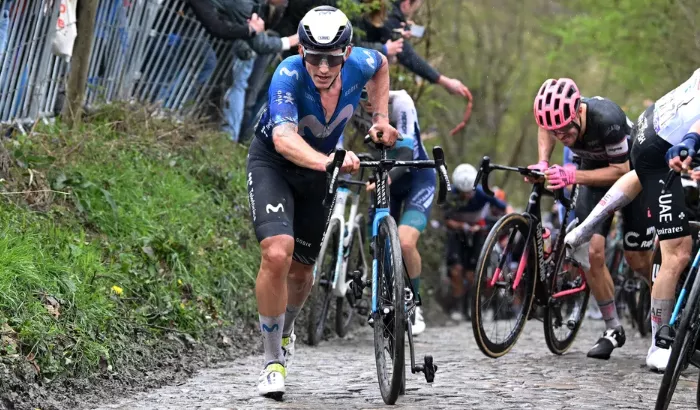As I pedaled through the iconic cobbled climbs of the Tour of Flanders, the reality of just how exceptional professional cyclists are hit me harder than ever before. Tadej Pogačar, for example, managed to conquer the Oude Kwaremont in just 2:49, nearly half the time it took me, even though I’d already ridden more than triple the distance. It’s a humbling reminder of the superhuman abilities of pro riders.
The Koppenberg, one of the event’s most daunting climbs, serves as a perfect illustration of this. Though it may seem manageable on paper — 600 meters long with an 11.1% average gradient — the steep cobbles and crowded conditions make it a much tougher challenge in reality. When I approached the climb during the ‘We Ride Flanders’ sportive, I was already aware that I would probably end up unclipping and walking. The long queue of riders only added to the difficulty, and starting from a standstill with my legs frozen meant the climb was practically impossible to tackle without dismounting.
The ‘We Ride Flanders’ event is an annual opportunity for amateurs like me to experience the famous climbs and cobbled sectors that professional cyclists race on the following day. This year, I opted for the 128km course, an increase from the 80km I completed in the previous edition. Though it may seem insignificant compared to the 169km raced by the women and 269km raced by the men, the physical toll it took on my body was immense. The challenge wasn’t just the steep climbs but also the relentless cobblestones, which seemed to sap the energy from my legs with every bump.
The weather was much more favorable than the previous year — 20 degrees and clear skies, compared to the chilly 8-degree drizzle of last year. Still, the event proved to be a tough test, leaving me with aching legs and an insatiable hunger. But it also gave me a deep sense of admiration for the professionals. After comparing my times to theirs on platforms like Strava, it became clear just how far ahead they are. My time on the Oude Kwaremont, for instance, was 6:22, a personal best, but still a full 2:49 behind Pogačar’s blistering performance.
Despite the pain, I loved the experience. Cycling is a unique sport in that it allows fans to ride on the same roads as their heroes. It’s easy to imagine yourself as the star of the race, powering through the climbs in your mind, even as you ride alongside the crowds who have come to cheer on the professionals the next day.
One of the highlights was conquering the Paterberg, another legendary climb, albeit at a much slower pace than the pros. I managed to crest it in 2:50, nearly two minutes slower than Lorena Wiebes’s best time, a sobering realization of how far removed I am from the elite level.
What truly struck me during this sportive was the brutality of the entire Flanders course. It’s not just the iconic climbs that challenge riders, but also the lesser-known sectors like the Steenbeekdries, Taaienberg, and even seemingly flat cobbled roads like Holleweg and Jagerij. For riders who struggle on cobbles, maintaining any sort of speed is nearly impossible, especially on the downhill sections where control seems more like a suggestion than a reality.
While these reflections might make it seem like I’m downplaying the event, I assure you, I’m not. The ‘We Ride Flanders’ sportive is a fantastic experience, especially with the ideal weather I had this year. Just don’t expect to glide up the climbs unless you’re an expert.
Finally, my thoughts are with the families and friends of the two people who tragically passed away during this year’s sportive. While it is an extreme event, it’s a sad reminder of the risks involved in such challenges.
Related topics
- Cyclist Dies Following Incident at London Circuit Race
- Driver Found Guilty of Vehicular Homicide in Death of Teen Cyclist Magnus White
- Tadej Pogačar Dominates Strava KOMs in Tour of Flanders Victory

